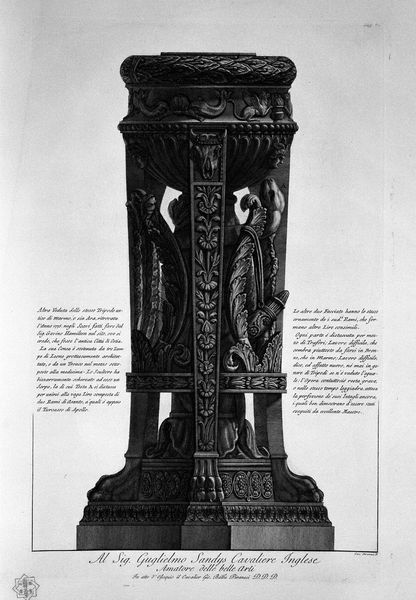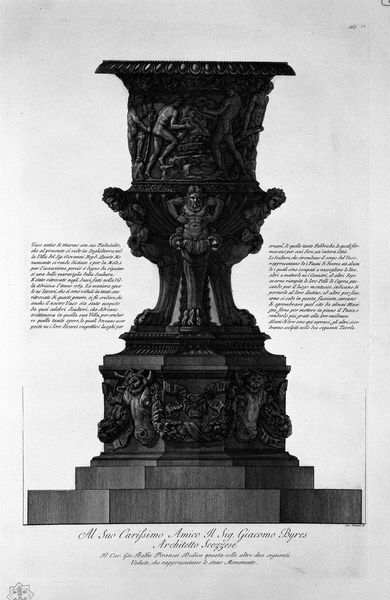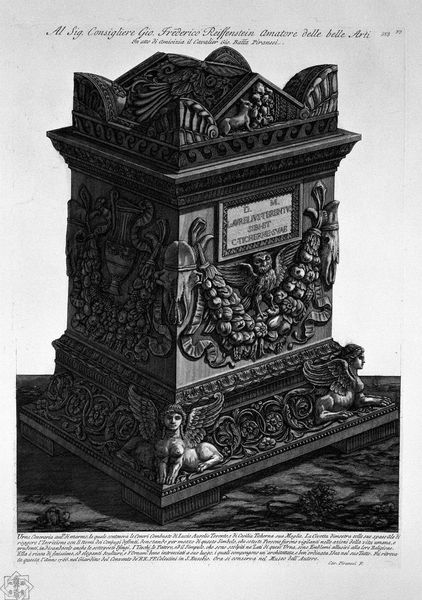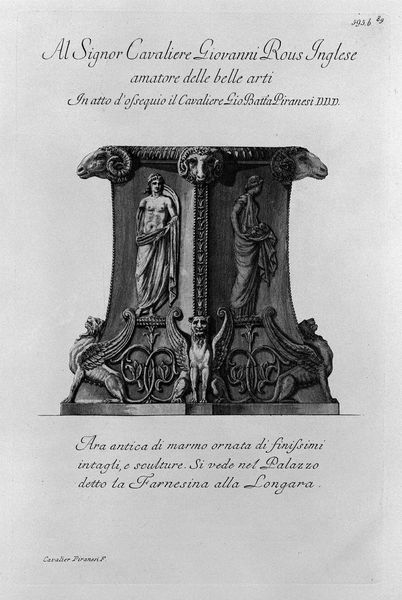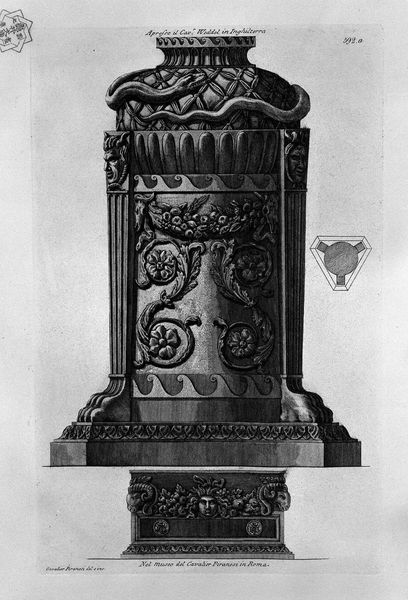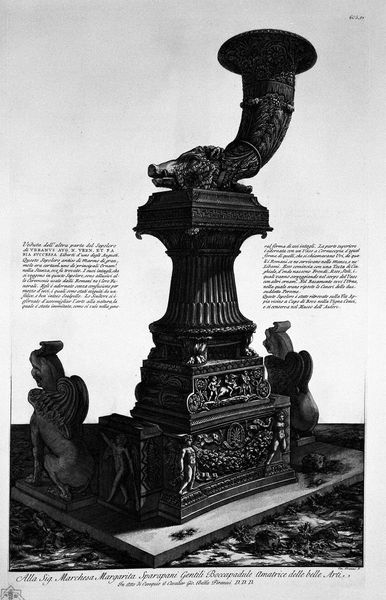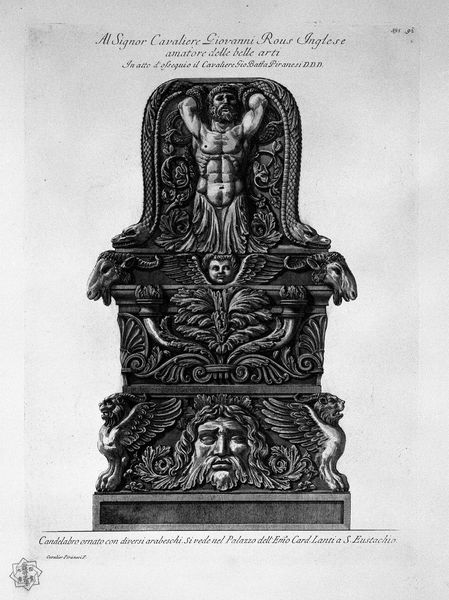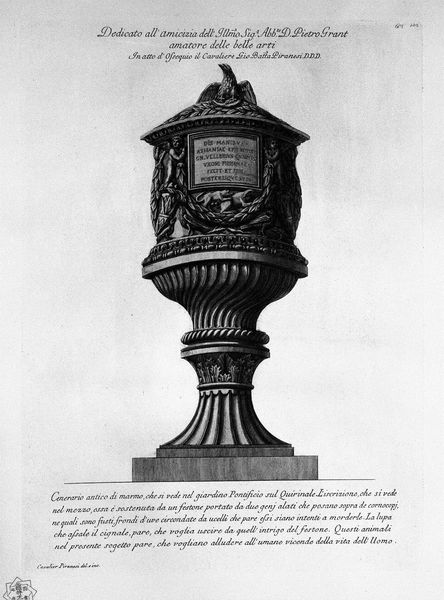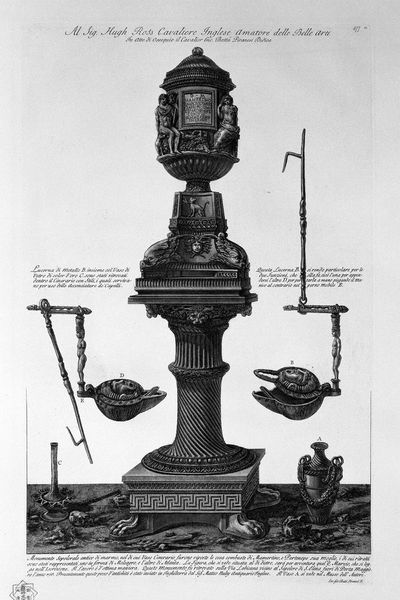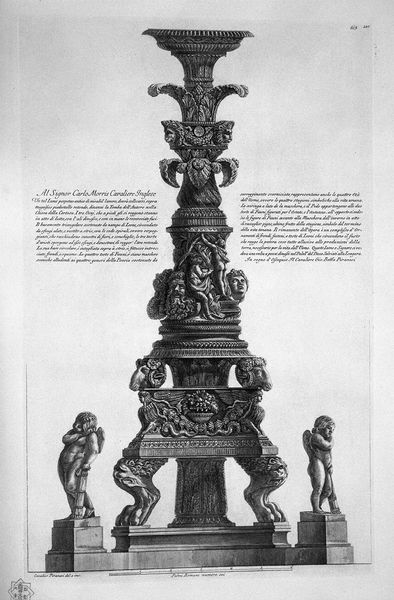
Tripod or ancient marble altar found at Ostia in 1775 (Vatican Museums)
0:00
0:00
bronze, sculpture, engraving
#
neoclacissism
#
sculpture
#
classical-realism
#
bronze
#
form
#
geometric
#
ancient-mediterranean
#
column
#
sculpture
#
carved
#
engraving
Copyright: Public domain
Editor: Here we have Giovanni Battista Piranesi's "Tripod or ancient marble altar found at Ostia in 1775." It is an engraving and really captures the monumentality of ancient Roman artifacts. What do you see in this piece, looking at it from a historical lens? Curator: Well, it's fascinating how Piranesi, through this engraving, is not just depicting an object but also engaging in a discourse about cultural authority. This altar, discovered during a period of intense archaeological excavation, immediately becomes a symbol, doesn't it? Of Rome's glorious past, yes, but also of the Papal States' claim to that legacy. Notice the prominent display of detail - almost an archaeological record within an artistic rendering. Editor: Yes, it feels like he’s trying to document everything meticulously. Is that related to how these discoveries were perceived at the time? Curator: Absolutely. The level of detail, the almost scientific approach, reflects the Enlightenment's obsession with cataloging and understanding the world through empirical observation. But consider too, that Piranesi wasn't just an artist; he was also an antiquarian deeply invested in promoting a specific narrative about Rome's supremacy. This image then functions as both art and propaganda. Who was the intended audience here? Editor: Presumably other artists, collectors… influential people who shaped the artistic and cultural landscape of the time? Curator: Precisely. Engravings like these circulated widely, influencing tastes, styles, and even political ideologies. It's not simply about representing a marble altar; it’s about shaping the perception of Rome's place in European history. It forces us to confront the complexities of art's role in constructing historical narratives. Editor: I hadn’t considered the political dimensions so explicitly. I am learning how artworks participate in broader social and political conversations! Curator: Exactly, it highlights how museums and the art market themselves become active participants in this narrative construction.
Comments
No comments
Be the first to comment and join the conversation on the ultimate creative platform.
